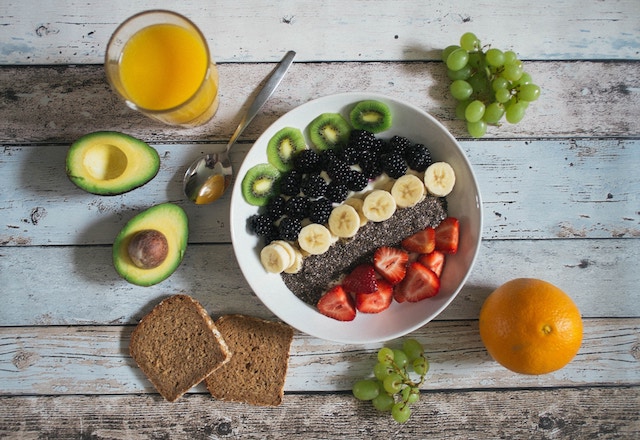Not All Carbs Are Created Equal

Not All Carbs Are Created Equal
Carbs get such a bad wrap. Scientifically this doesn’t make sense. Carbohydrates are one of the primary sources of fuel for the central nervous system, for our brains, and for exercising muscle. Let’s think about this, our minds and our bodies require carbohydrates to function, yet every day on social media we are bombarded with advertisements selling diet programs that misguide us into carbohydrate deprivation, with the promise of quick weight loss. Atkins and The Keto Diet are just a few. Following a carbohydrate-deficient diet program for any significant length of time is a dangerous game to play with your health.
When there’s an inadequate amount of energy available to the body, in the form of carbohydrates, our bodies shift over to plan B to get the energy required to function. In Plan B, our body breaks down protein and lean muscle tissue to use as the energy needed to support our basil metabolic rate. Let me restate this! When our body is deprived of carbohydrates it takes the energy it needs from protein or lean mass first, not fat! Carbohydrates are the bodyguard of protein. They protect protein so it can do its job of building and repairing tissue. Oh one more thing, did you know carbs are also needed to burn fat completely?
All carbohydrates are not created equal. Carbohydrates in the proper form can be a nutritional powerhouse.
Carbohydrates 101:
Carbohydrates are made up of 3 elements, carbon, hydrogen, and oxygen.
Carbohydrates in the food we eat are categorized from simple to complex.
Simple Carbohydrates
(The not-so-good carbs that can lead to chronic diseases such as obesity, heart disease, and diabetes are the carbs that deserve the bad wrap!)
Simple Carbohydrates, also known as simple sugars, have 1 or 2 sugar units chained together and are absorbed very quickly into the bloodstream. These types of carbs can provide quick energy. They can also spike blood sugar levels and the release of insulin when over consumed or consumed without the presence of a protein or healthy fat.
Some examples of simple carbohydrates are white bread, sugary breakfast cereals, and baked goods. These carbohydrates have been refined. This means that the outer shell of the grain has been removed in processing, taking much of the nutrients with it. Simple carbs land on the high end of the glycemic index. This means that the sugar content is high and the absorption rate is rapid. The glycemic index is explained below.
Complex Carbohydrates
(The good carbs that are power packed with nutrients and aid in preventing chronic illness deserve a blue ribbon.)
Complex Carbohydrates are made up of 20 or more sugar units chained together. Given their length, it takes much longer to break them down into their component parts to be absorbed. These carbohydrates are high in fiber and packed with nutrients. They have not gone through a refining process. Therefore, the nutrients are in tack. Some examples of complex carbohydrates are fresh fruits and vegetables, whole grains, beans, and peas. Complex carbs land on the low end of the glycemic index. They contain less sugar and are absorbed slowly, keeping your blood sugar level intact.
The Glycemic Index
A great tool to use in evaluating carbohydrates is the glycemic index; it provides insight into the body’s use of carbs and how quickly blood sugar rises upon the ingestion of the foods. The higher the glycemic index a food has, the more likely it is to increase our risk for chronic disease. Many of the high glycemic index foods are processed and contain high fructose corn syrup.
Even though all carbohydrates contain four calories per gram, they are not created equal.
Here are a few examples:
A bowl of raw oatmeal and a bowl of corn flakes could have the same amount of carbohydrates; however, the glycemic index of oatmeal is 58 while the glycemic index of corn flakes is 81. The oatmeal is packed with heart-healthy fiber and protein while the cornflakes have been processed and do not provide the nutrients your body requires.
An apple and a baked potato could have the same about of carbohydrates; however, the glycemic index of the apple is 38 while the glycemic index of the baked potato is 85.
Dr. Roberta Anding, a clinical dietitian at Baylor college of medicine, shares a simple rule to follow that can quickly help you determine the glycemic index of a food. She says, “the more hands that touch it, the more steps in the processing, the higher the glycemic index.” If we get an apple from our refrigerator, one hand-picked it, one hand puts it into our mouth. No extra sugar is added, nothing is removed from the apple in processing to make it have a longer shelf life or taste sweeter.
What did we learn?
Just because all carbs contain 4 calories per gram doesn’t mean they are created equal.
Complex carbohydrates are fiber-rich, packed with nutrition, and can reduce your waistline while aiding in disease prevention. A fundamental question to ask yourself when choosing a carbohydrate is, how many hands have touched the food? Is the carbohydrate refined and processed? If so let it go!
Blessings & Health!
Ann
For more information from Dr. Anding, check out her book, “Nutrition Made Clear”.
